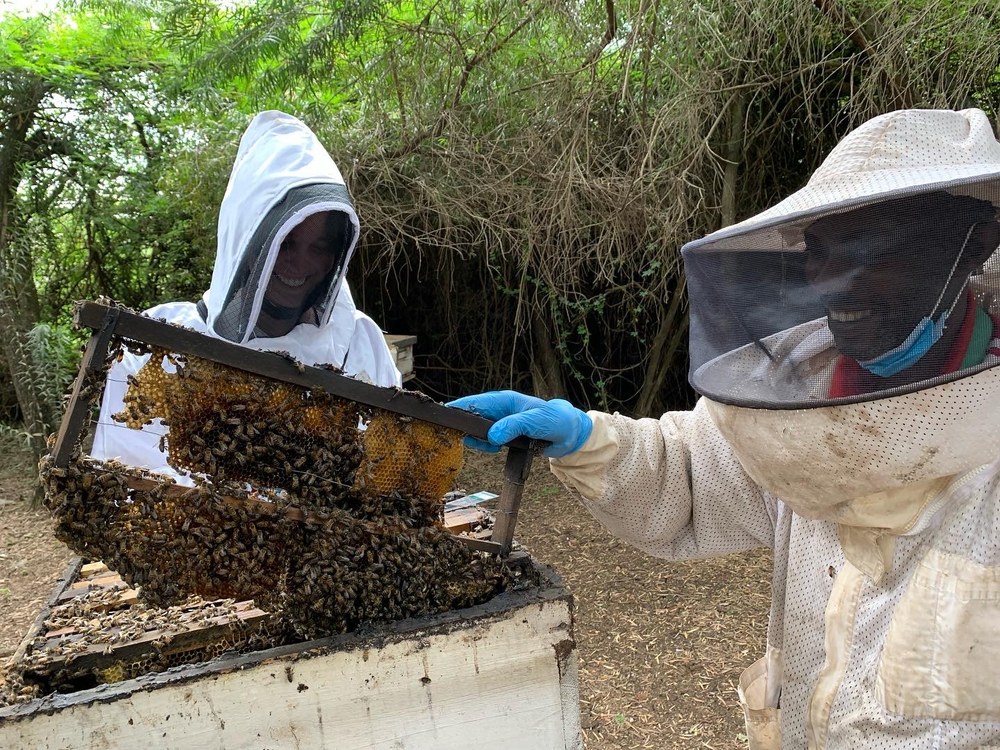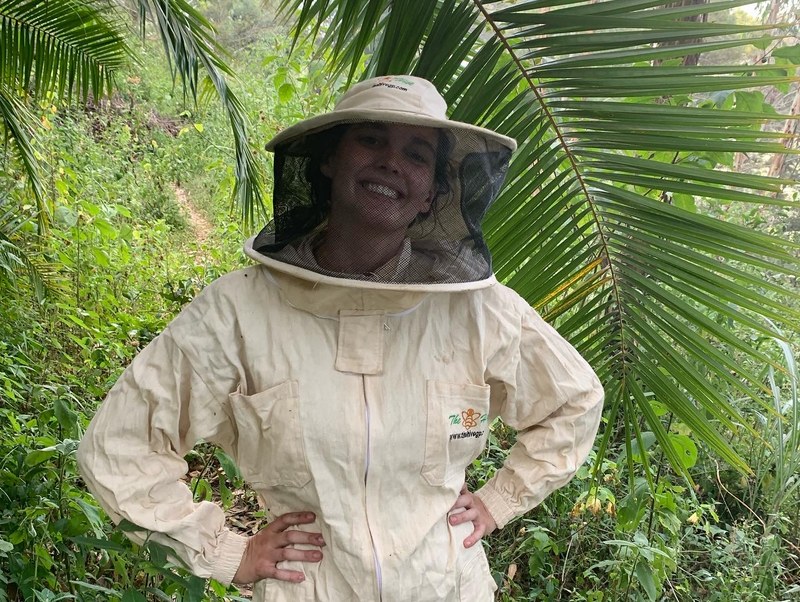Posted: May 20, 2022
Ecology and CPR graduate student Darcy Gray discusses her research on honey bee colony management in Kenya

Darcy Gray working in Kenya with honey bees
In North America and Europe this spring, as flower buds start to open and warm, sunny days become more frequent, honey bees emerge from their hives, finally taking trips to collect pollen and nectar after months relying on honey stores while in their winter cluster inside the hive. African honey bees, however, have an entirely different schedule. Bees in Africa do not need to hunker down for a cold winter, as the seasons are more typically a cycle of wet and dry periods; instead the subspecies of honey bees found in Africa, including Apis mellifera scutellata (the East African lowland honey bee) undertake a seasonal migration where many- but not all- colonies will completely abscond from their hive and head for greener pastures. I took a page out of their book this winter, as I left Pennsylvania in December and have managed to escape the most brutal months of the winter while I conduct my fieldwork in Kenya, in partnership with icipe, the International Centre for Insect Physiology and Ecology in Nairobi.


Why do some colonies leave and not others? And what are the factors in the landscape that lead to this seasonal absconding and cause differences in the number of colonies that abscond across different regions? These are the questions I am interested in for my Master’s in Ecology in Dr Christina Grozinger’s lab, with fieldwork supported by the Fulbright US Student Program. To answer these questions, we installed in-hive continuous monitoring devices across a number of apiaries here in Kenya, spanning from the lowland savannah ecosystem to Kenya’s only tropical rainforest near the Uganda border. We will compare data on when colonies abscond to data on landscape and weather factors sourced from satellite remote sensing. We are working with beekeeping cooperatives that icipe has relationships with as well as the nonprofit organization Save the Elephants, whose Elephants & Bees Project installs “bee fences,” or chains of honey bee hives, around farms to mitigate human-wildlife conflict (as it turns out, elephants are afraid of bees and this is an effective way to keep them off farms!)
Understanding what landscapes and weather conditions are most suitable for honey bees, and what factors increase likelihood of absconding, will help organizations like Save the Elephants make informed decisions about where bee fences are an appropriate mitigation strategy. Furthermore, Kenyan beekeepers can benefit from a deeper understanding of the seasonal patterns of colony growth and absconding, as they may be able to support colonies with supplemental food or select apiary sites more strategically.

